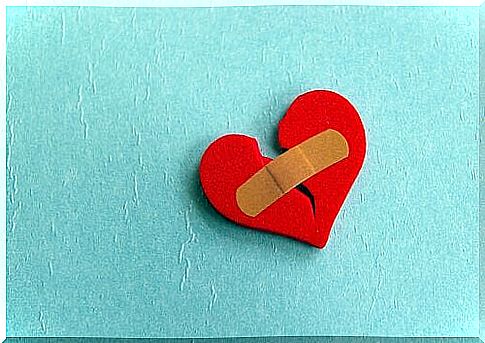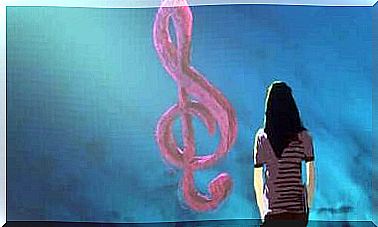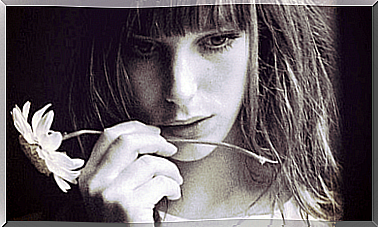Healing Means That Pain Ceases To Control Your Life

Healing emotional wounds does not mean forgetting. It means, more than anything else, getting to the point where they no longer control your life. Something like this requires a careful transformation process. You must understand that after this change you will not be the same anymore. To be healed does not mean to go back in time, it means to rebuild and give shape to something new, something stronger and more valuable.
We all have wounds that need attention. We live in a world full of different types of violence. Some are more explicit and others hidden and quiet. Things like gender discrimination, discrimination, bullying, intimidating someone physically or threats on social media, family dysfunction, or even cultural messages about beauty and success, can all leave their mark on us.
In recent centuries, Western psychology has tried, with varying degrees of success, to soothe these wounds with a wide range of techniques. This is science that is, at heart, an attempt to relieve pain and give us the right techniques to improve our thought patterns and behaviors. The overall goal is to achieve positive life changes.
However, it is not possible if the patient is not willing to do so, to be cured. What happens very often is that instead of tackling the problem, whether it is an isolated event or a traumatic past, people choose to ignore it. We clench our fists, close our hearts and march forward without looking back.
As you can probably guess, this is a bad strategy. Another mistake we often make is to believe that time heals all wounds by itself. All we need to do is let the days, months or years pass for things to resolve themselves. But time does not heal anything. What we do during this time is what allows us to be healed.

Healing wounds: looking for primary pain
Alba is 30 years old. About 8 months ago, she lost her dad to a stroke. Everyone around her, including her partner, friends and family, is amazed at how she handles her grief. She did not take any time away from work. On the contrary, she became almost obsessively focused and began to work at a frantic pace.
No one has seen her cry or show any kind of emotional response. She is more active than ever. She’s barely home. It’s like she’s trying to stay busy all the time, so she does not have to think or feel anything. Still, she came to a point with so much exhaustion and stress that she decided to go to her GP to get ” something that helps me sleep or relax”. However, her doctor decides to send her to a psychologist.
After the first assessment with Alba, the psychologist can see two things very clearly. The first is that his patient has not mourned at all. The second is that she has created a very effective “survival” version of herself that hides a deep, primary pain. Alba needs to heal her wounds, wounds that can go beyond just the loss of her father. It may be traumatic events from her past that were reactivated when she lost her father. All this combined created an even more complex upheaval.

This story helps us understand two things that we will discuss further. When you encounter the experience of pain, emptiness, and confusion that traumatic events such as abuse, loss, or abuse can cause, people often try to just scroll to the next page and forget about it. That’s why they create this “fake me” character, a character that helps them stay afloat.
Nevertheless , the wound is still there and lying in and waiting. Little by little it will spread and even cause other secondary wounds (isolation, personality disorders, anxiety, depression, etc…)
Emotional first aid
It is a very interesting book called The Primal Wound by John Firman , which explains something as interesting as it is useful. Healing does not mean erasing trauma. It is about making it possible for ourselves to be like human beings. Most importantly, it is about creating an empathic connection with the first wound.
This last part may seem strange or complex. To understand this, just remember one thing: when someone goes to therapy, the first thing they will notice is the empathic environment. They are in a warm and intimate environment where the psychologist tries to connect with his patient. So, what the patient must try to do is to empathically relate to their wounds and internal needs. He or she must reconnect with all that pain. The pain they have neglected and tried to ignore.
By doing this, we can heal this primary trauma and its secondary effects, little by little. It is a delicate process. Similarly, another thing that Dr. Firman explains in his book is the importance of knowing the right emotional first aid for all the “emotional cuts and bruises” that we suffer from every day. Let’s look at a few examples.

5 First Aid Techniques for Curing Wounds
- Describe and pay attention. The first piece of advice is not to wait until tomorrow with what you can do today. Do not ignore what worries you today. The best way to do that is to know how to describe your emotional states. Words like “today I feel empty and angry, I feel pain, I’m scared, I feel alone, frustrated, etc.” can help.
- The second step is not to be addicted. You should understand and accept that no one deserves to be the victim of a traumatic wound, disappointment or an ongoing negative state of mind.
- The third step is to have compassion for yourself. No one should love you or worry as much about the pain as you. Feeling compassion means making the pain visible and understanding that it needs treatment and relief.
- A good support system. Although we may prefer it, it is not always good to deal with our problems and everyday wounds and bruises alone. Having a good support system that allows you to air out and express yourself is very helpful.
The last step is to change. Healing and relieving your wounds means making more than one change. It requires more than an adjustment on a personal level and in the environment to give way to something new. Sometimes meeting new people, starting new projects, or trying a new hobby can be incentive enough to start dreaming again.








